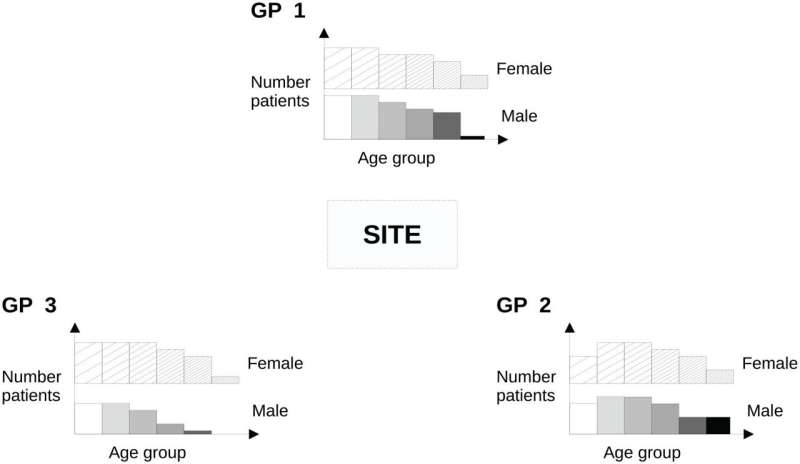This article has been reviewed according to Science X's editorial process and policies. Editors have highlighted the following attributes while ensuring the content's credibility:
fact-checked
trusted source
proofread
New computer model addresses inequity in selecting clinical trial participants

People who enroll in health research studies, such as cancer screening trials, usually have better health than the target population (the "healthy volunteer" effect).
A new paper led by Dr. Adam Brentnall, Senior Lecturer in Biostatistics at Queen Mary's Wolfson Institute of Population Health, in collaboration with colleagues from King's College London, describes a computer algorithm developed to help target trial invitations to achieve more equitable representation. The work is published in the journal Clinical Trials.
The new model tilts clinical trial participation invitations towards groups less likely to join, to ensure that enough people are included in the trial from all major societal and ethnic groups.
The model was tested in practice in recruitment to the NHS-Gallieri multi-cancer screening trial. Over 11 months ≈1.5 million invitations were sent to recruit 140,000 people, making it likely to be the fastest recruiting trial of this size ever. This method of inviting participants for clinical trials addresses the "healthy volunteer" effects and inequity that exist in many health research studies, and can be adapted for use in other trials or research studies.
More information: Adam R Brentnall et al, Dynamic data-enabled stratified sampling for trial invitations with application in NHS-Galleri, Clinical Trials (2023). DOI: 10.1177/17407745231167369



















